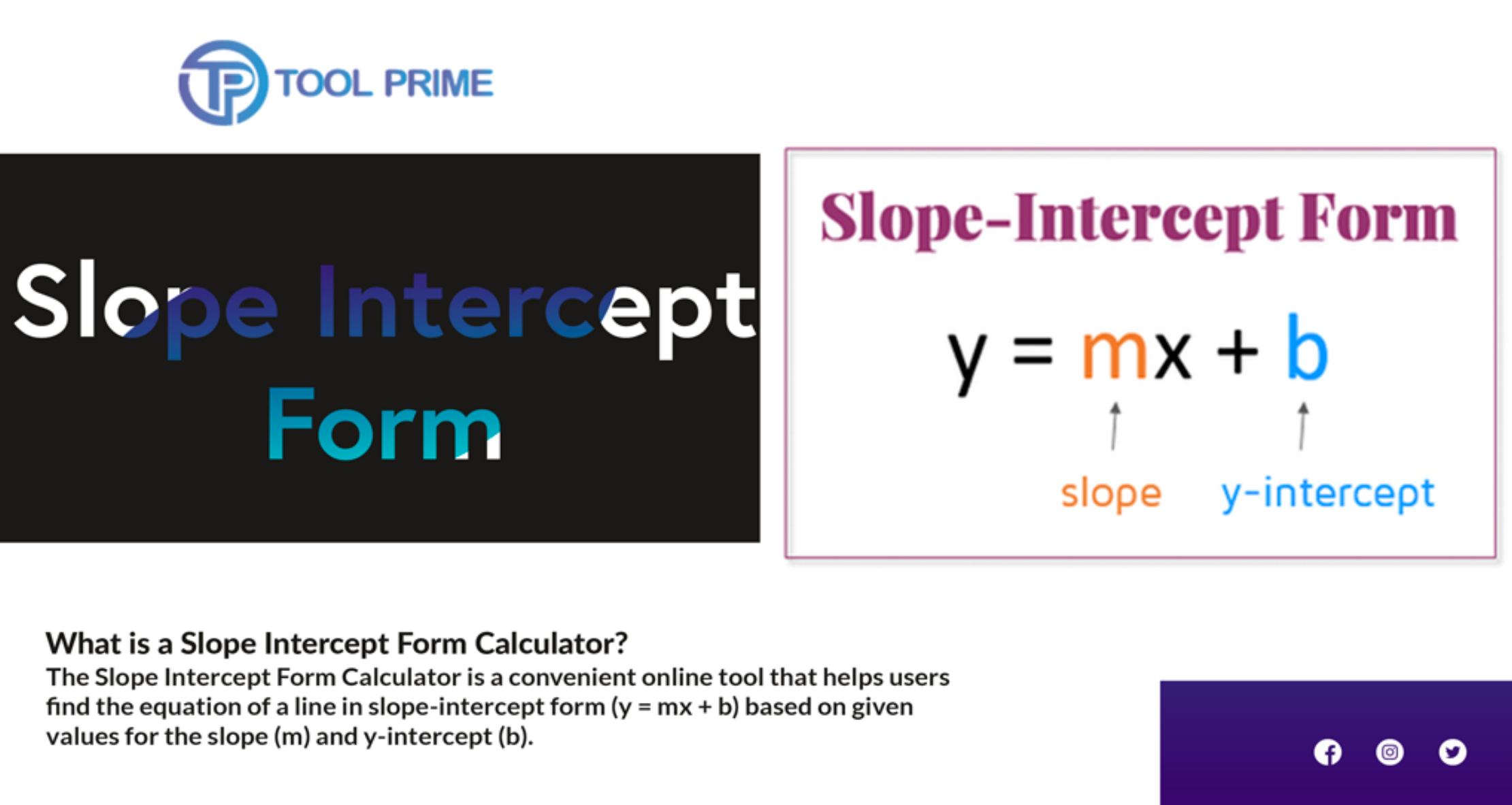Introduction: In the realm of algebra and linear equations, one of the most commonly used forms is the slope-intercept form. This form, often denoted as y = mx + b, offers a straightforward way to represent a linear equation on a graph, where ‘m’ represents the slope and ‘b’ represents the y-intercept. Understanding and mastering slope-intercept form is crucial for solving various mathematical problems and real-world applications. In this comprehensive guide, we will explore the intricacies of slope-intercept form, its significance, and provide a handy slope intercept form calculator to simplify your equations.
Understanding Slope-Intercept Form: Slope-intercept form is a linear equation written in the form y = mx + b, where:
- ‘y’ represents the dependent variable (usually the vertical axis),
- ‘x’ represents the independent variable (usually the horizontal axis),
- ‘m’ represents the slope of the line,
- ‘b’ represents the y-intercept, the point where the line crosses the y-axis when x = 0.
Key Characteristics of Slope-Intercept Form:
- Slope (m): The slope of a line represents its steepness or incline. A positive slope indicates an upward trend, while a negative slope denotes a downward trend. A slope of zero indicates a horizontal line.
- Y-Intercept (b): The y-intercept is the point where the line intersects the y-axis. It represents the initial value of the function when x = 0.
- Linearity: Slope-intercept form represents linear equations, meaning the graph of the equation forms a straight line.
Importance of Slope-Intercept Form: Slope-intercept form offers several advantages, making it a preferred choice for representing linear equations:
- Graphical Representation: The form y = mx + b is conducive to graphing, allowing for a visual representation of linear relationships.
- Ease of Interpretation: The slope and y-intercept can be easily identified from the equation, providing insights into the behavior of the line.
- Flexibility: Slope-intercept form facilitates quick modifications to the equation, enabling adjustments to the slope or y-intercept as needed.
- Real-World Applications: From analyzing trends in data to modeling physical phenomena, slope-intercept form finds widespread applications in various fields, including economics, physics, and engineering.
Using the Slope Intercept Form Calculator: To simplify the process of solving equations in slope-intercept form, we’ve developed a user-friendly slope intercept form calculator. Simply input the values of slope (m) and y-intercept (b), and the calculator will generate the corresponding equation in slope-intercept form.
[Calculator Interface]
Practical Examples and Applications:
- Calculating Total Cost: In business and economics, slope-intercept form can be used to model total cost functions, where the slope represents the marginal cost and the y-intercept represents fixed costs.
- Predicting Growth Rates: In finance, slope-intercept form can be employed to forecast growth rates of investments or economic indicators, with the slope representing the growth rate and the y-intercept indicating the initial value.
- Analyzing Motion: In physics, slope-intercept form is utilized to analyze motion graphs, where the slope represents velocity and the y-intercept denotes the initial position.
Conclusion: Mastering slope-intercept form is an essential skill for anyone working with linear equations, whether in mathematics, science, or real-world applications. By understanding its components, significance, and practical applications, you can harness the power of slope-intercept form to model, analyze, and interpret linear relationships effectively. With the aid of the slope intercept form calculator provided, you can streamline your problem-solving process and gain confidence in tackling equations with ease. So, embrace the versatility of slope-intercept form, and unlock a world of possibilities in the realm of algebra and beyond.
